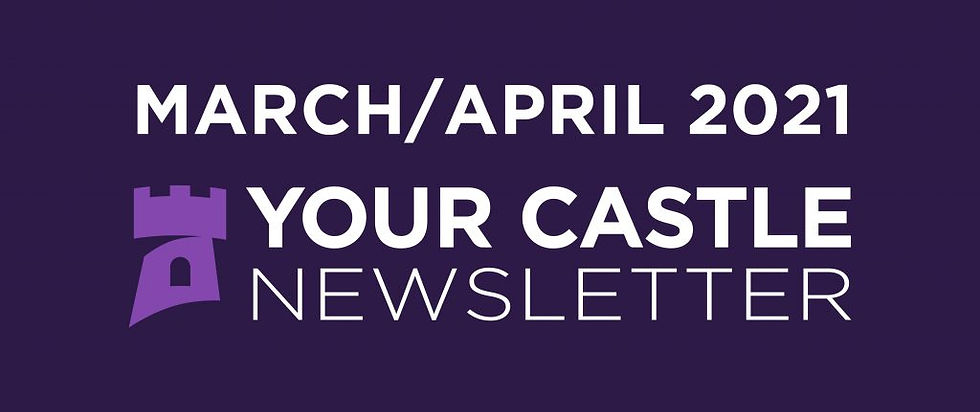February / March Newsletter
- Chelsea Steen

- Mar 5, 2021
- 4 min read

SCARCITY IN THE LOW END OF THE MARKET PERSISTS, BUT NOT FOREVER
Despite cold temperatures that normally keep things a bit bleak in the Denver metro, many people’s attitudes are beginning to thaw. A growing number of Colorado residents are getting their vaccinations against the Coronavirus, and many are increasingly optimistic about the prospect of moving closer to their normal routines later this year. This optimism is also becoming apparent in the local real estate market. Despite a dismal 2,316 active listings on the market at the end of January, as of February 17th, that number had already jumped closer to 3,300 actives. Although that number is prone to fluctuation and still signifies a seller’s market, it is a good sign of things to come in 2021. Every vaccine that gets administered brings us one step closer to a normal economy and further away from the negative effects of the pandemic.

SELLERS
TREMENDOUS EXCITEMENT, BUT ALSO TRIPIDATION
Many home sellers are ecstatic and with good reason. The lack of inventory in the lower end of the market brings friction for buyers and their agents. However, on the seller side, it can be a best-case scenario. The average number of showings per active listing was 20 in January This high showing traffic tends to lead to competitive bidding wars. These wars can drive offers up tens of thousands of dollars above the asking price. If a home is priced correctly from the start.
One of the other most important real estate metrics is MOI or months of inventory. This is a metric that represents if buyers kept buying at the same pace that they did in the last 12 months, how many months would it take to sell every home currently available on the market? For detached homes MOI is close to 0.3 months – that’s only about 9 days! For condos, it is 0.8 months or around 24 days. This data shows an extremely strong seller’s market, and I do not see that changing any time soon.
The average sales price in Q4 2020 was up a whopping 17% from Q4 2019. For condos, this increase was around 5%. The luxury market also shifted to a seller’s market in 2020, which is fairly unprecedented. It is still a seller’s market for mid-range and luxury homes, although homes above about 1,800 square feet are simply taking a bit longer to sell than entry-level homes since the demand is slightly lower.
ARE WE IN A “BUBBLE”?
Some would-be sellers are nervous that prices have gone up so much that we are in a bubble. For clarity, in the past 50 years, there has never been a time when prices dropped when it has been a seller’s market and a simultaneous shortage of inventory. There have only been three years out of the last 52 where home prices dropped in the Denver metro. One was in 1985 when mortgage rates, inflation, and unemployment were in the double digits, and we had about 11-12 months of inventory. That year was an extreme buyer’s market.
2008 and 2009 were the other two years when priced dipped. We had 35,000-36,000 homes on the market during the Great Recession. Those two years also had well over 6 months of inventory. I cannot foresee a scenario where home prices will drop significantly this year. That is, beyond a slight decline due to the homes available for sale moving from luxury homes in mid-late 2020 to a more normal mix of homes in all price points, probably starting in the summer of this year.
Foreclosures are another common concern for sellers who are worried about a bubble. However, foreclosure activity is the lowest it has been in 20 years, and all the leading indicators show an improvement as people catch up on forbearances in 2021. The odds of foreclosure being a large factor on the market any time soon are very low. Not as many people are behind as you might think. Unless people bought their home in the past year and are in forbearance, they should have equity built up, so won’t go into foreclosure. They may fall behind, but if that is the case, they can sell their homes and walk away with the equity.

BUYERS
AN UNCOMFORTABLE LACK OF INVENTORY
The lack of current housing inventory is primarily caused by two factors. The first is that many people are uncomfortable showing their homes due to the virus. They do not want a bunch of people walking through their homes. This fear can be remedied if proper safety protocols are followed.
The second major cause of low inventory is that entry-level and lower-paid workers have been disproportionately affected by the recession. Many are still worried about losing their jobs. There is still a fear of selling their first home until things are closer to normal. Low inventory currently spans all price points but is especially acute in the entry-level market. I am in hopes that by the end of summer all the people thinking about selling their homes but did not due to Covid-19 fears, will do so as more people are vaccinated.
This first round of immunity should give people more courage and excitement. Eventually, they should move past their fears and into selling their homes. New construction is projected to be on the upswing this year too, which should help the unit count slightly. Sales are still happening every day at all price points, so do not let yourself get too discouraged. It may just take a bit longer to make a move than normal. There are strategies to come out victorious in multiple offer situations. This extremely low inventory should let up a bit by at least July as people start to cast off some of their Coronavirus fears.




Comments